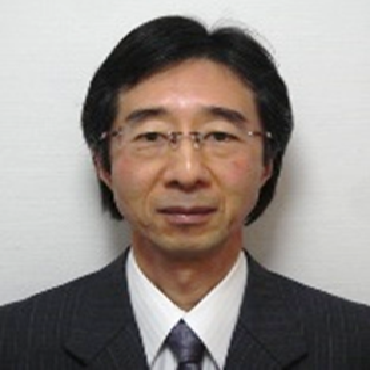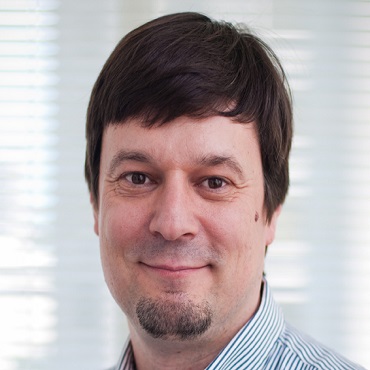Scientific Program
Keynote Session:
Title: Development of the laser-induced water bubble actuator
Biography:
Shigeru Omori completed the Masters course from Graduate School of Electrical Engineering, Shibaura Institute of Technology in 1982. He joined Matsushita Denki Sangyo (c.k.a. Panasonic) in the same year. He was engaged in research and development of cathode ray tube and wavelength conversion device. He joined TERUMO Corporation in 1993. He was engaged in research and development of 3D television, micromachines, medical laser, and surgical manipulator at its R&D Center. He was a professor at Department of Medical Science, Faculty of Medical Science, Teikyo Heisei University in 2015. Presently, he is engaged in the development of medical laser and its application study. He is a Doctor of Medicine.
Abstract:
Aiming to realize the newly actuator without any electric cable, the use of laser-induced water vaper bubble has been proposed and performed the principle confirmation experiment. The laser induced water bubble has been applied for the liquid jet therapeutic catheter in medical field1). The liquid jet system use physiologic saline for the liquid and a Ho: YAG laser of 2.1µm wavelength that has highly absorption of water. Instead of this combination, we propose the use of carbon powder suspension for working liquid and an infrared Laser Diode (LD) of 970nm wavelength. As the 970nm LD light is not absorbed by water but carbon, the water of the working liquid could be vaporized by heated carbon. LD is considered as a suitable laser source for the actuator in the viewpoint of output controllability by the drive-current modulation. Figure 1 shows the conceptual image of the laser-induced water bubble actuator. It is constructed with a 970nm LD, an optical fiber and an actuator unit with working liquid for producing bubble.
An optical fiber connector (SMA connector) has been used for the bubble generator unit in our principle confirmation experiment. We use the inlet space for inserting and fixing fiber cable as the actuator cylinder. The working liquid was prepared by suspending carbon powder of 20µm particle size in water with surface active agent. After the working liquid has been injected in the cylinder, a stainless steel rod of Φ2.3mm diameter and 30mm length inserted as the actuator piston. When the laser irradiation was performed at the LD power of 160-180W and the pulse duration of 2msec, the reciprocating motions of the stainless steel rod have been observed.
For the next step, we are planning to evaluate the operating characteristic and also try to maximize the generating force.
Title: The epigenetic transgenerational effect of maternal diet on offspring brain development in an animal model of perinatal asphyxia
Biography:
Arsene Cosmin has his expertise in research and molecular diagnostics. He is also a member of Epigenetics and Metabolomics Association, researcher at The Research Institute of the University of Bucharest (ICUB), scientific consultant at Genetic Center Romania, and one of the few fellows in Romania advocating the importance of epigenetics in his country. Recently he was selected as an Expert-Evaluator (Genetics, Epigenetics) in H2020 at the European Commission, Research Executive Agency (REA).
Abstract:
Statement of the Problem: Hypoxic-ischemic encephalopathy (HIE) secondary to perinatal asphyxia (PA) affects especially vulnerable brain areas such as hippocampus and is a leading cause of neonatal morbidity. During pregnancy, high-fat diet (HFD) can induce developmental changes that might enhance the risk of peripartum complications including HIE secondary to PA. Trans-resveratrol (tRESV), is a polyphenol with antioxidant properties that can be used as a maternal dietary supplement in PA. The aim of this study was to identify new epigenetic mechanisms of brain inflammation and injury related to PA, to explore the benefit of tRESV enriched maternal diet and the potential negative impact of the HFD.
Methodology & Theoretical Orientation: The hippocampal interleukin 1 beta (IL-1b), tumor necrosis factor alpha (TNFα) and S-100B protein, were assessed in postnatal day 6 rats exposed to asphyxia, the offspring of female Wistar rats expose to an enriched diet of high-fat or tRESV. The expression of non-coding microRNAs miR124, miR132, miR134, miR146 and miR15a as epigenetic markers of hippocampus response to PA was determined 24 hours post-asphyxia.
Findings: Neural response to PA could be epigenetically controlled. Maternal HFD additionally increases hippocampal TNFα, IL-1b, and S-100B after PA. PA associated with maternal HFD induces miR124 up regulation and miR132 down regulation relative to PA only. tRESV reduces asphyxia-related neuroinflammation and neural injury and down-regulates miR132 and miR15a.
Conclusion & Significance: This data supports the neuroprotective quality of tRESV when used as a supplement in the maternal diet on the offspring’s outcome in PA.HFD increases the PA-induced neuroinflammation and neuronal injury, and epigenetically influences homeostatic synaptic plasticity and neuronal tolerance to asphyxia.
Title: Divergence controlled ultrasonic transmitter array for 3-dimensional long range imaging system in air
Biography:
Sahdev Kumar has his expertise in evaluation and passion in improving the ultrasonic range sensing. The developed high power ultrasonic transmitter based on novel array elements generates ultrasonic beam to enhance its sensing range up to more than 25 m. He has designed and built this novel ultrasonic array transmitter after twenty years of experience in research and development in Indian Air Force including Aichi Institute of Technology, Toyota, Japan under the guidance of Professor (Dr) Hideo Furuhashi.
Abstract:
Ultrasonic sensing techniques are widely used in the various scientific ultrasonic instruments using sophisticated software for various non-destructive industrial and medical applications, owing to its propagation in all kinds of medium including solids, liquids and gases except vacuum. There are many applications using ultrasonic sound in air, such as distance measurement and range imaging etc. at low cost. However, the main disadvantage is its short measurable range due to the large absorption of the ultrasonic sound in air. Another disadvantage is its bigger size. It consists of an array receiver and due to the large inter-element spacing, grating lobes appears that creates ghost images of the object. Therefore, it was the main difficulty to make it a practical product. However, because of a recent progress of Micro Electro Mechanical Systems (MEMS) technologies, it became possible to make a very small microphone array with many elements in a very small area. To extend the measurable range, some approaches were reported such as; high power sound source using spark discharge, using large scale transmitter elements and improving the signal to noise ratio (SNR) through pulse compression technique etc. In this paper, I have proposed a usage of high power ultrasonic phased array transmitter and ultrasonic array receiver using MEMS microphones for a long-range ultrasonic imaging system. The characteristics of the transmitter on the number of elements, modulated pulse width, etc. are investigated theoretically as well as experimentally. An ultrasonic array transmitter consisting of 144 (12 × 12) elements is constructed. It is controlled by four FPGAs and approximately 30 dB higher sound pressure level has been obtained than that of the single transmitter. The positions of the object are measured by delay-and-sum operations on the reflected received signal. The performance of the imaging system is compared with the system using a single transmitter. The improved 3D measurement field of an object by controlling the divergence of the ultrasonic transmitting array to improve the view angle of the system is shown. In isotropic divergence controlled system, the applied divergence is equal in both; x and y planes. In some applications a wide horizontal and narrow vertical measuring field is required. Therefore, I proposed an anisotropic divergence control system in which horizontal and the vertical divergence angles can be controlled independently. I described the principle of the anisotropic divergence control of the PAT and confirm it by numerical simulations. The anisotropic divergence of the transmitter was successfully controlled. Although, the sound pressure when the divergence was controlled 20o × 5o was about 6 dB lower than that of the PAT in phase and, 10 dB higher than the isotropic divergence controlled system and 26 dB higher than the single transmitter. The measurable range of the system with anisotropic divergence control has been improved over the isotropic divergence control by >2 m. The developed system can accurately detect the object while locating it at different positions. The maximum measurable range is > 25 m without any divergence. The developed system is useful in natural interferences e.g., smoke, fog, darkness etc. to make it a unique and novel ultrasonic long range imaging and the measurement system.
Title: High power terahertz radiation emitter and terahertz imaging technology
Biography:
Brahm Pal Singh completed his Ph.D. in Quantum Electronics in 1990 from IIT Delhi, and D.Eng. in Quantum Engineering in 1996 from Nagoya University with Postdoctoral Studies at NPL New Delhi, India and AIST Tsukuba, Japan. Dr. Singh is a Research & Development Manager in Advanced Technologies Development Center, ES Company, Panasonic Corporation. He has published over 30 research papers in reputed journals and international conferences/symposiums and has been serving as a referee for the international reputed journals.
Abstract:
Terahertz (THz) radiations lie in electromagnetic spectrum gap between the infra-red and the microwave frequencies from 0.10 THz to 30 THz. In last few decades, generation and detection of THz radiations has attracted considerable interest not only in technological applications for THz imaging but also as a tool to investigate fundamental properties of materials by using time domain THz spectroscopy. Other applications too include information technology, biomedical sciences, non-destructive evaluation, security, quality control of foods beverage and medicines, environment monitoring and ultrafast computing etc. Much effort has been made to increase the generated terahertz radiation power. Among various methods, generation of THz radiation with the biased photoconductive switch (PCS), play very important role owing to its simple configuration and power controllability by bias and geometrical scaling. The low temperature (LT) grown GaAs PCS is most commonly used due to its sub picosecond lifetime and high mobility. Though, the THz generation efficiency is limited by its low breakdown field of about 5 x 105 V/cm. Thus, wide band gap materials with high breakdown electric fields are attractive for high power THz radiation, e.g., GaN with breakdown voltage 3.3 x 106 V/cm having high saturation velocity 2.5 x 107 V/cm and high thermal conductivity 1.3 W/cm K. Thus we investigate the most straight forward electromagnetic radiation from a GaN based large aperture LA-PCS. A carbon doped epitaxial layer was used for active region to realize high resistivity to stand high bias voltage.
THz pulses of 93.3 pJ/pulse energy was estimated at 500 V bias on excitation with 120 fs laser pulses of 266 nm wavelength with device structure as shown in fig.1. Figure 2 depicts the experimental setup with typical THz pulses and THz spectrum generated by LA GaN-PCS and measured with TDS detection.
Title: Adaptive control for high speed on/off valve to preserve dynamic performance
Biography:
Qi Zhong received the B.S. degree in Mechanical Engineering and Automation from Zhejiang University of Technology, Hangzhou, China, in 2010. He is currently working toward the Ph.D. degree in the School of Mechanical Engineering, Zhejiang University, Hangzhou, China. His research interests include digital hydraulic technology and its application in engineering machinery, intelligent control, and mechatronic systems.
Abstract:
High speed on/off valve (HSV) is an essential digital hydraulic component, and has been widely used for pressure and flow control in hydraulic systems, which require faster and more stable dynamic performance of HSVs to improve control preciseness. However, for some special kinds of HSVs, like ball structure and poppet structure valves which can reset by the hydraulic pressure instead of a traditional reset spring, their dynamic performance is greatly affected by the hydraulic pressure. Aiming at this problem, a self-correcting PWM control algorithm based on current feedback (SPWMCF) is proposed to improve and even maintain the HSVs’ original dynamic performance under changing pressures. Using current feedback analysis based on critical switching currents, the operational state of the HSV is estimated, and adaptive logic switching of different duty ratios of power source is also realized to preserve the dynamic performance of HSV under changing supply pressure to the maximum extent. Finally, a ball structure HSV is used as a research object, through numerical and experimental studies, it is demonstrated that the supply pressure has a great influence on the dynamic characteristics of the HSV, and the proposed control algorithm achieves the expected effect that the dynamic characteristics of the HSV is not only greatly improved but adapted to pressure changes, and the variation range of the dynamic performance can be controlled within 7.4% (0.3ms) under 4-20MPa operating conditions. The presented control algorithm is effective and can be applied in HSV-controlled systems to improve the robustness of the target actuator.
Title: Investigating the nexus between DNA repair pathways and genomic instability in cancer
Biography:
Sonali Bhattacharjee did her BSc in Biotechnology from Bangalore University in 2006 and MSc in Applied Genetics from Bangalore University in 2008. She then moved to England to pursue her DPhil (Phd) in Biochemistry from Oxford University where she studied the role of Fml1 and its partner proteins Mhf1 and Mhf2 in promoting genome stability. She was awarded her DPhil in 2012. During her time at Oxford, she was also a tutor at Greene’s College, Oxford. In 2013, She moved to Cold Spring Harbor Laboratory, New York. At CSHL, her work has focused on understanding the epigenetic regulation of DNA repair. She is also an academic tutor at the Watson School of Biological studies, the school for graduate studies at CSHL.
Abstract:
DNA double-strand breaks are one of the most lethal lesions to a cell that can be repaired by one of the two cellular pathways; non-homologous end joining or homologous recombination. Homologous recombination genes are particularly attractive targets for precision cancer therapy because these genes have altered expression patterns in cancer cells when compared with normal cells and these genetic abnormalities can be targeted for selectively killing cancer cells while leaving normal cells unscathed. Synthetic lethality is thought to be the new frontier of cancer therapeutics because it overcomes the limitation of chemotherapy, which is unable to discriminate between cancer cells and normal cells. Two genes are synthetically lethal when simultaneous disruptions of both genes gives rise to a lethal phenotype, while the disruption of either gene alone is viable. Many homologous recombination genes have synthetic lethal relationships with oncogenes and tumor suppressor genes, which can be targeted for the development of cancer therapy- an approach referred to as combination therapy. In my presentation, I will summarize recent progress in understanding both the functioning and the regulation of the DNA repair machinery and elaborate on the clinical applications of these proteins in cancer therapy.
Title: INCREASING INCIDENCE OF BRAIN TUMORS
Biography:
Dr. Anil Batta is presently senior consultant in Govt.Medical College,Amritsar Punjab, India. He did his M.B.B.S. and M.D. in Medical Biochemistry from Govt. Medical College, Patiala in 1984 and 1991, respectively. His research interest is mainly in clinical application especially cancer and drug de-addiction. He has supervised more than 15 M.D., M.Sc. and Doctorate researches and published more than 30 international research papers. He is the chief editor of America’s Journal of Biochemistry. He is also working as advisor to the editorial board of International Journal of Biological and Medical Research. Recently, he has been deputed advisor to Pakistan Medical Journal of Biochemistry. He has been attached as technical advisor to various national and international conferences in Biochemistry. He has been attached as hi-tech endocrinal, genetics and automated labs of GGS Medical College, Faridkot. He has chaired various sessions in the Biochemistry meets.
Abstract:
A brain tumor is a collection of abnormal cells in the brain. Brain tumors can be either malignant (cancerous) or benign (unlikely to spread). However, there is a limited amount of space in the skull. Therefore, any brain tumor—even one that is benign—can interfere with the functions of your brain and body. Brain tumors can destroy brain cells, increase inflammation, and elevate the pressure in the brain. A primary brain tumor starts in your brain. When cancer cells from other parts of your body cause a tumor in your brain, it is called a “secondary” or “metastatic brain tumor.” Secondary brain tumors are three times more common than primary brain tumors. All secondary brain tumors are malignant. Brain tumors are described by their location, tissue type, and the cells that make up the mass. The following types of brain tumors are commonly found in adults6:
1. The following types of brain tumors are commonly found in adults: Gliomas come in different types. They range from non-cancerous to mixed cells. Glioblastomas are the most aggressive form of glioma.
2. Meningiomas are more common in adults in the 40-70 age groups. They are typically non-cancerous. Meningiomas occur more commonly in women.
3. Schwannoma also occur in adults aged 40-70. They affect both men and women1.
4. There are also other types of brain tumors that can be found in adults. Some rare types of adult brain tumors include pituitary tumors, primary lymphoma of the brain, and ependymomas.
Key words; Tumors, Meningiomas, metastatic, Schwannoma
Title: Critical determinants of mitotic bookmarking by the major notch signaling effector RBPJ
Biography:
Abstract:
Title: A Genomic Study of Type 2 Diabetics Attending the Outpatient Clinics of Egyptian National Institute of Diabetes and Endocrinology
Biography:
Prof. Dr. Mohsen Khalid has graduated from faculty of medicine Cairo University in November 1980. He has completed his Master degree in Internal Medicine May 1986, and then he completed his Medical Doctorate in Internal Medicine November 2003. He is a consultant of Diabetes and Endocrinology in the Egyptian National Institute of Diabetes and Endocrinology. He has published more than 20 papers in reputed journals. The research interest of Prof. Dr. Mohsen Khalid is Genetics of Diabetes, diabetic complications and how to assist diabetic patients to live a good life with life style modification and medical treatment.
Abstract:
In complex diseases like type 2 diabetes, obesity and cardiovascular diseases, multiple genetic and environmental factors as well as the interaction between these factors determine the phenotype. Although environmental influences, such as high-caloric fat- and carbohydrate-enriched diets and a sedentary lifestyle with markedly reduced physical activity, certainly accelerate disease development in those with genetic predisposition, it is of great clinical importance to explain the genetic variants that increase the risk of diseases like type 2 diabetes.
A panel of established variant single nucleotide polymorphism ( SNPs ) in patients diagnosed with type 2 diabetes mellitus has been evaluated in many studies compared to a non- diabetic control population .These results were used as a basis of comparison to analyze risk-conferring genotypes in type 2 diabetes mellitus to demonstrate type 2 diabetes risk associated factors . The results of this study provides a better understanding of the genetic epidemiology of type 2 diabetes in Egypt. Identifying genetic markers of type 2 diabetes will help to reduce disease onset and may ultimately adjust future risk factors through the early detection and healthy life style modification.
Our study made an attempt to study the most common single nucleotide polymorphism ( SNPs ) genotypes associated with type 2 diabetic patients attending the outpatient clinic of Egyptian National Institute of Diabetes and Endocrinology. There was a significant increase in serum levels of FBS, HA1c, TG and LDL in patients group compared to normal healthy controls (P-value < 0.05).While there was no significant difference between patients group and normal healthy controls regarding bilirubin, ALT, AST, creatinine and potassium (P-value > 0.05).
Title: Epigenetics for Precision Health & Performance
Biography:
Dr. Mickra Hamilton is Co-Founder and CEO of Apeiron Center for Human Potential/Apeiron Academy, and a Colonel and Human Performance Subject Matter Expert in the United States Air Force Reserves. She is a Master Coach and creative disruptor in the field of Epigenetic Human Potential Coaching creating a new paradigm for what is possible for human health and well-being. Dr. Hamilton skillfully works with the individual DNA blueprint to optimize human performance through epigenetic lifestyle genomics. This precision, evidence-based approach addresses the physiological, emotional, mental, and energetic aspects of the “human system.” Dr. Hamilton knows that thriving health is the very scaffolding of a life well lived and the beginning of a remarkable journey into the realms of limitless human potential. This new paradigm for living focuses on the science of epigenetics to move beyond health and wellbeing into all possibilities. This precision, whole systems approach optimizes and enhances all aspects of the human experience that encompasses us as individuals, how we interact with our environment both internally and externally and how this impacts the collective environment.
Abstract:
A precision, whole systems genomics approach to thriving health and wellbeing has enormous clinical applications in the emerging field of environmental epigenetics research. We can now look at all aspects of an individual’s life, their medical and family history, occupation, their lifestyle, the environments they function in, individual systems diagnostics and genetics along with real time markers from sensor and mobile data to provide precise lifestyle interventions to optimize and enhance gene expression. This new precision offers high specificity on health, tracks how individual choices affect health now and how that translates to the future. It also provides new insights about how we are interacting with our environment, in real time and in detail. The interplay of our genes and our experiences, of nature and how it interacts with nurture, has now moved from the mysterious to the knowable.
The Science of Epigenetics assists us to create precise optimization strategies by taking the reigns of gene expression to adapt and thrive under modern environmental pressures. Every decision we make contributes to this process in some way. The food we eat, the quality of sleep we experience, the cars we drive, the products we clean with and put on our skin, the thoughts we think, the levels of stress we carry and the chemicals and medications we dump into our water supply, all have an effect. This discussion will detail the evidence-based use of precision epigenetics and genomics as strategies to mitigate the effects of environmental toxins in the human system. Additionally, we will discuss actionable lifestyle modifications and system support processes to fine tune and enhance our human experience as we interact with our environment.
Title: The centers of premeltons signal the beginning and ends of genes
Biography:
Henry M. Sobell completed his studies at Brooklyn Technical High School (1948-1952), Columbia College (1952-1956), and the University of Virginia School of Medicine (1956-1960). Instead of practicing clinical medicine, he then went to the Massachusetts Institute of Technology (MIT) to join Professor Alexander Rich in the Department of Biology (1960-1965), where, as a Helen Hay Whitney Postdoctoral Fellow, he learned the technique of single crystal X-ray analysis. He then joined the Chemistry Department at the University of Rochester, having been subsequently jointly appointed to both the Chemistry and Molecular Biophysics departments (the latter at the University of Rochester School of Medicine and Dentistry), becoming a full tenured Professor in both departments (1965-1993). He is now retired and living in the Adirondacks in New York, USA.
Abstract:
Premeltons are examples of emergent structures (i.e., structural solitons) that arise spontaneously in DNA due to the presence of nonlinear excitations in its structure. They are of two kinds: B-B (or A-A) premeltons form at specific DNA-regions to nucleate site-specific DNA melting. These are stationary and, being globally nontopological, undergo breather motions that allow drugs and dyes to intercalate into DNA. B-A (or A-B) premeltons, on the other hand, are mobile, and being globally topological, act as phase-boundaries transforming B- into A- DNA during the structural phase-transition. They are not expected to undergo breather-motions. A key feature of both types of premeltons is the presence of an intermediate structural-form in their central regions (proposed as being a transition-state intermediate in DNA-melting and in the B- to A- transition), which differs from either A- or B- DNA. Called beta-DNA, this is both metastable and hyperflexible – and contains an alternating sugar-puckering pattern along the polymer-backbone combined with the partial-unstacking (in its lower energy-forms) of every other base-pair. Beta-DNA is connected to either B- or to A- DNA on either side by boundaries possessing a gradation of nonlinear structural-change, these being called the kink and the antikink regions. The presence of premeltons in DNA leads to a unifying theory to understand much of DNA physical-chemistry and molecular-biology. In particular, premeltons are predicted to define the 5’ and 3’ ends of genes in naked-DNA and DNA in active-chromatin, this having important implications for understanding physical aspects of the initiation, elongation and termination of RNA-synthesis during transcription. For these and other reasons, the model will be of broader interest to the general audience working in these areas. The model explains a wide variety of data, and carries within it a number of experimental predictions – all readily testable – as will be described in my talk.
Title: The Prevalence of Mutations in Natural Population of Drosophila melanogaster
Biography:
Tarfa M. Peter is a young lecturer and a research especially in Neuroscience and Stereology, currently on his doctorate degree program in Nigeria. He has a passion for science and training of younger scientist that are coming up and also to contribute his quarter in the science world and also to make impact in his immediate community, the society, the nation and the world at large. He believes that this conference on Bioinfomatics will go a long way in his carrier as a researcher and training of younger colleagues because research need Bioinformatics.
Abstract:
The evolutionary process is conditioned by the existence of genetic variability. The description of this variability in a population is the first step in studies of evolution and it is necessary to explain its origin and its maintenance and to predict its evolutionary consequences. The aim of this research was to observe the prevalence of mutations in Natural population of Drosophila melanogaster (fruit fly). One thousand one hundred and fifty two (1152) Drosophila melanogaster flies were randomly collected and observed for the prevalence of physical mutations, of this number, 991 (86.02%) were trapped from the wild population with the prevalence of yellow body mutation occurring at 14.7% (females 14.2% and males 0.5%). 161 (13.98%) were the first filial generation having the prevalence of yellow body mutation occurring at 20.5% (19.3% were females and 1.2% males). The yellow body mutant flies have a defect in their “yellow gene” which is located on the X-chromosome. Since the yellow gene is needed for producing the flies’ normal black pigment, yellow body mutant flies cannot produce the pigment. It is a non-lethal recessive mutation; hence, flies having such defect survive and pass the defect to their offspring in the subsequent generation.
Keynote Session:
Title: Stable autosomal monoallelic expression is maintained by multiple mechanisms
Biography:
Alexander “Sasha” Gimelbrant is an Associate Professor of genetics at Harvard Medical School and Dana-Farber Cancer Institute. He has earned his PhD in biochemistry at Moscow State University. After postdoctoral work at the Whitehead Institute and Massachusetts General Hospital, he has started his laboratory at the Dana-Farber Cancer Institute. His lab is interested in the epigenetic mechanisms controlling allele-specific expression in development and disease, and the role of these mechanisms in biological variability.
Abstract:
Widespread autosomal monoallelic expression (MAE) affects thousands of mammalian genes in a manner resembling X-chromosome inactivation (XCI). Similar to XCI, MAE results in an epigenetic mosaic, with clonal cell populations showing highly stable transcriptome-wide patterns of full or partial allelic silencing. In contrast to XCI and genomic imprinting, very little is known about the mechanisms involved in allelic silencing of genes subject to MAE. To identify perturbations that can disrupt silencing during MAE, we have developed a systematic screening approach, Screen-seq ASE. This multi-well screening approach is based on targeted RNA sequencing at dozens of MAE loci. Changes in allele-specific expression (ASE) are assessed using existing polymorphisms in cDNA, obviating the need of introducing extrinsic reporters into the cells. We have previously characterized MAE in monoclonal B-cell lines from mice with a high density of polymorphisms (129xCast F1). For our screen, we assessed changes in ASE for 28 genes in one such cell line in response to a collection of 48 drugs known to affect epigenetic targets. In 3 of 28 genes tested, exposure to the DNA methylation inhibitor 5-aza-deoxycytidine reactivated the silenced alleles. The extent of reactivation is dose and time-dependent. Partial reactivation of the same genes was also observed in response to knock-down of Dnmt1, consistent with the role of DNA methylation in MAE maintenance in some loci. Our multi-locus screening strategy has allowed us to identify, for the first time, a perturbation that reactivated alleles stably silenced due to MAE. For a subset of these genes, the maintenance of allelic silencing depends on the DNA methylation state. Transcription of other genes remained monoallelic, suggesting that MAE maintenance in different loci depends on distinct mechanisms.
Title: A human way of being and optimizing sickness away
Biography:
Jay M Goodbinder is a diplomate of the American Board of Chiropractic Internists and has expertise in functional endocrinology, immunology, biochemistry, physiology, and genetics. He is the best-selling author of a book titled “Defending Your Life.” He has helped thousands of people from around the world overcome chronic illness and get their lives back. He is the owner and lead clinician of the Epigenetics Healing Center and his passion is to continue proving people have the power to reverse their own chronic illness.
Abstract:
Statement of the Problem: Humans have been seen incredible increases in chronic illness. Researchers tend to focus on minimizing symptoms by administering a drug or treatment that they have been paid to research. There is a clear reward for achieving a beneficial result when studying these treatments as the manufacturer that pays for the study, commissions a specific research company and that company (who is being paid by said manufacturer) will be hired again if they get the result the manufacturer was intending. As improving health is the most optimal way to defeat chronic disease, there should clearly be more research done in this field. There is research being done, but it is being done on specific products in order to generate profit and they are still engineering studies with the intent of a positive result. The truth is that humans have also needed certain factors in order to optimize health. There is no special product, chemical or herb from some far off destination that will bring health. Health is who you are and what you do on a daily basis. Whether it is diabetes, thyroid, parkinsons, MS, rheumatoid arthritis, colitis or other chronic diseases, there is always a biochemical process that is an adaptations to stressors placed upon the body. Those stressors can be chemical, biochemical, physiologic, emotional and more. Although the gold standard for research is a double blind placebo study, 1 factor, drug or supplement, will not give miraculous results for chronic illness. It will require a complete transition of eating habits, drinking clean water, having good sleep, stress management and good relationships. The purpose of this presentation is to provide evidence for the ability to remediate chronic disease using lifestyle and natural products as well as removing harmful parts of the person’s lifestyle.
Methodology & Theoretical Orientation: A case study of patient’s who chose to alter their lifestyle to reverse chronic disease and get off medications from beginning to follow up.
Findings: These patients, who worked with the Epigenetics Healing Center and followed dietary, exercise and supplementation protocols according to laboratories, have completely reversed chronic diseases that are said to have no cure.. Conclusion & Significance: Recommendations are made to patients dealing with chronic disease and polypharmacy, to adapt appropriate lifestyle change and supplementation to make them sufficient in all biochemical, physiological, spiritual and emotional factors. This is proven to be effective at reversing chronic disease.
Title: Critical Determinants of Mitotic Bookmarking by the Major Notch Signaling Effector RBPJ
Biography:
Hua-Ying Fan is an Associate Professor in the Program of Cancer Genetics, Epigenetics and Genomics in the University of New Mexico Comprehensive Cancer Center since 2017. She was an Assistant Professor in the Department of Biochemistry and Biophysics and a Core Member of the Epigenetics Program at the University of Pennsylvania Perelman School of Medicine between 2010-2017. She is interested in the field of Epigenetics and her research is currently focused in two main directions: (I) to understand how the unique and overlapping biochemical activates of different ATP-dependent chromatin remodelers are used to shape the epigenetic landscape to allow specific biological processes to ensue, and how defects in these activities can lead to disease, such as cancer, and (II) to unravel epigenetic mechanisms that maintain cell-fate commitment and lineage fidelity through mitosis via Notch Signaling. She received her PhD from New York University, New York, USA, and did her postdoctoral training with Dr. Alan Weiner at Yale University and with Dr. Robert E. Kingston Mass General Hospital/Harvard University. She was a Howard Temin fellow between 2003-2008.
Abstract:
Cell identity maintenance requires the faithful propagation of specific transcription programs through mitosis and transcription factors selectively retained on mitotic chromatin have emerged as critical players for this process, termed mitotic bookmarking factors. We identified RBPJ, the major transcriptional effector of Notch Signaling, as one of the very few sequence-specific transcription factors retained on the mitotic chromatin of mouse embryonal carcinoma F9 cells. ChIP-seq revealed that only 60% of the chromosomal sites occupied by RBPJ in interphase cells are retained in mitotic cells. As with other bookmarking factors, how RBPJ is selectively retained at a subset of its interphase-binding sites during mitosis is entirely unknown. We hypothesized that RBPJ-interacting proteins might contribute to this selective mitotic-chromatin retention. RBPJ is known to interact with the histone deacetylase HDAC1 and histone demethylase KDM5A. ChIP-qPCR demonstrated that HDAC1 and KDM5a associate with RBPJ binding sites in an RBPJ-dependent manner. Intriguingly, HDAC1 knockdown resulted in an increase of RBPJ occupancy in mitotic cells, indicating that HDAC1 negatively regulates RBPJ-mitotic chromatin association. Similar results were found in cells treated with the histone deacetylase inhibitor TSA. Remarkably, we also found increased mitotic KDM5a occupancy at sites of mitotic chromatin that displayed increased RBPJ occupancy in HDAC1 KD or TSA treated cells. Knockdown of KDM5a in TSA-treated cells reversed this effect, indicating that KDM5a positively regulates increased RBPJ-mitotic chromatin association in the context of HDAC1 KD or TSA treatment. To understand further the mechanisms that retain RBPJ on mitotic chromatin, we investigated the status of histone posttranslational modifications. We found that increased RBPJ occupancy is associated with decreased tri-methylation and increased mono-methylation on histone H3 lysine 4. Together, these results uncover a regulatory mechanism that can lead to the selective retention of transcription factors on mitotic chromatin.
Title: High precision automatic mask-wafer aligner using moire sensing technology
Biography:
Brahm Pal Singh completed his Ph.D. in Quantum Electronics in 1990 from IIT Delhi, and D.Eng. in Quantum Engineering in 1996 from Nagoya University with Postdoctoral Studies at NPL New Delhi, India and AIST Tsukuba, Japan. Dr. Singh is a Research & Development Manager in Advanced Technologies Development Center, ES Company, Panasonic Corporation. He has published over 30 research papers in reputed journals and international conferences/symposiums and has been serving as a referee for the international reputed journals.
Abstract:
With the tremendous increase in complexity of integrated circuits having many multifunctional devices on the same board, rapidly shrink the interconnection line width to sub micro meter dimensions levels. The reduced device size can result in the reduced intrinsic switching time, the reduced power consumption as well as the reduced device cost. The devices dramatic miniaturization depends on novel lithographic processes and a high accuracy in mask-wafer alignment technique. Moiré signal sensing technology can provide ultrahigh alignment accuracy up to less than +/- 50 nm. To achieve high accuracy in mask-wafer alignment, it required initial alignment to be done with the help of microscopes to bring the mask-wafer alignment grating pitch marks within the moiré signal capture range. We have proposed two steps with coarse and fine mask-wafer alignment to make the process automatic without a microscope. When a laser beam is passed through a pair of identical gratings, of say 25 nm pitch, a relative displacement in their position gives a highly periodic signal called “moiré” signal. This moiré signal is suitably amplified, processed and digitalized to find out the maximum and the minimum values of the moiré signal to compute its inverted moiré signal Iinv and their difference error signal Idiff using Iinv = A + B – I and Idiff = Iinv – I = (A + B) – 2I, where A, B, and I are maximum, minimum and instantaneous digital values of the moiré signal. A novel method was developed to align mask and wafer with placement accuracy estimated to be +/- 40 nm to achieve automatic alignment accuracy to be better than +/- 50 nm. Figure 1 and figure 2 show a setup for feasibility experiments with moiré signals and digitalized moiré signals with alignment marks, respectively.

















